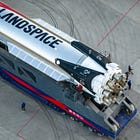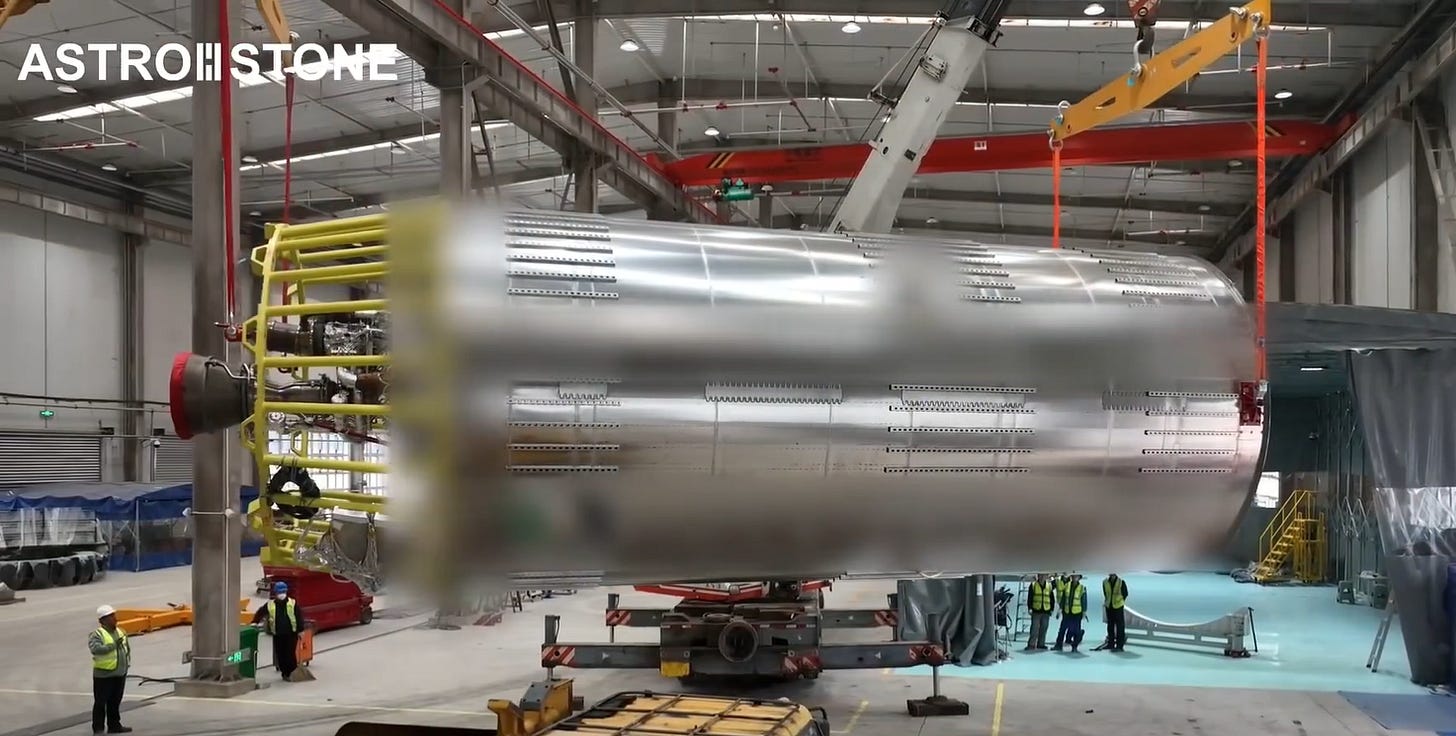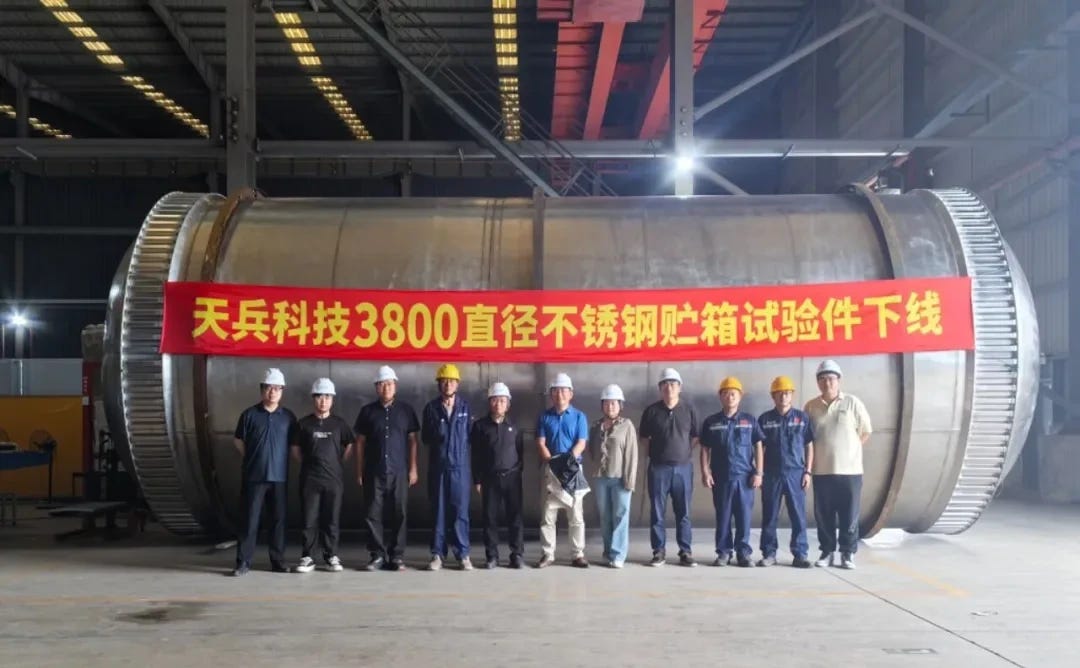Flight Preparations, Tests Planned, and Upgrades
With some business news alongside.
Launch companies that are a bit further away from flight are currently performing or preparing for hardware tests, while those close to the launch are conducting assembly of the flight vehicle. Meanwhile, other rockets are gaining upgrades.
Kinetica-2 undergoing pre-debut assembly
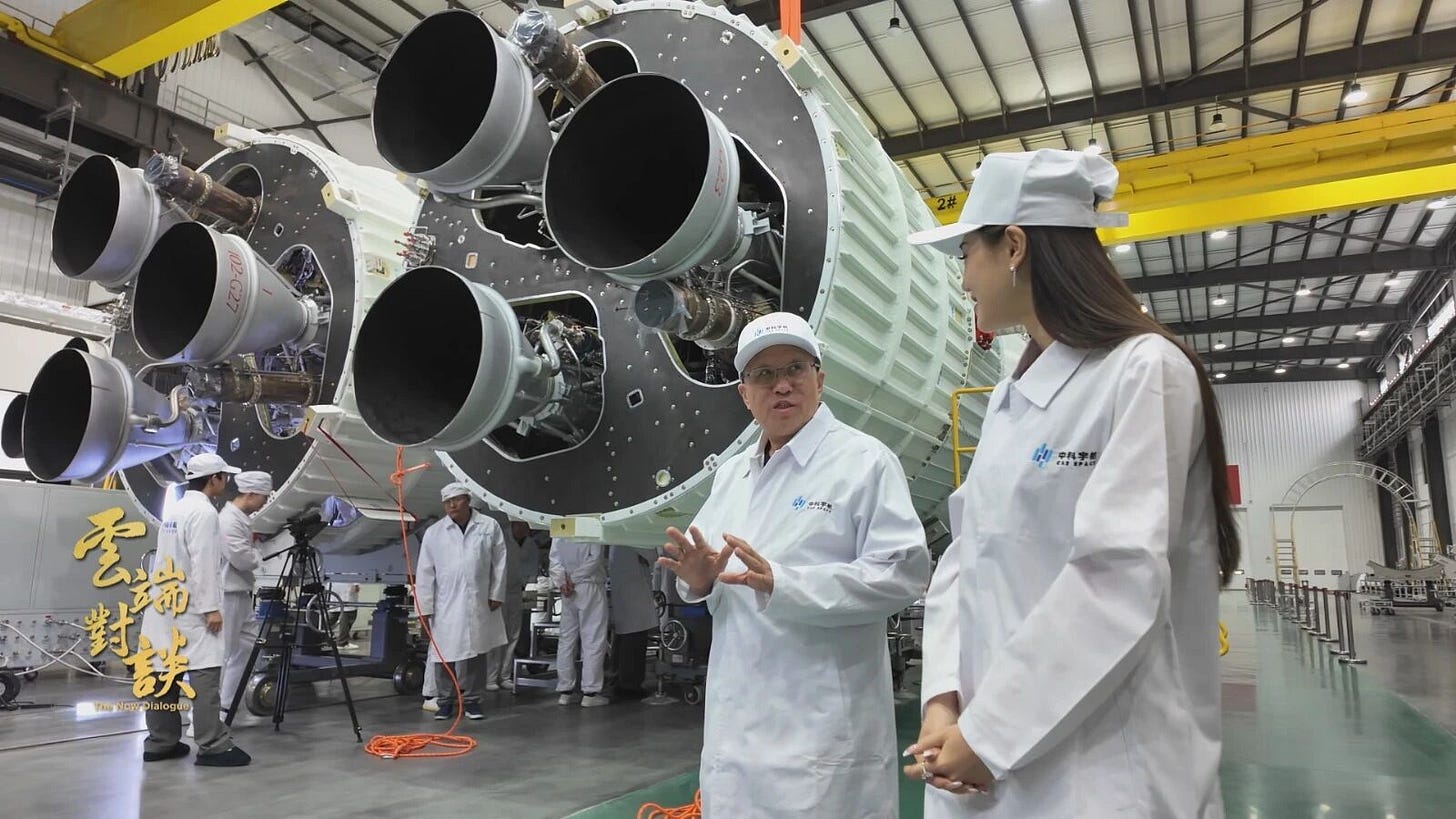
CAS Space’s Founder and Chairman, Yang Yiqiang (杨毅强), participated in a twenty-minute interview (I plan to cover it properly later) that surfaced online on October 18th, in which he showed the interviewer around the company’s launch vehicle production facility. Inside the facility, a nearly completed Kinetica-2 launch vehicle was shown off, with its three first-stage booster cores, second-stage, and fairing.
Sometime in the coming weeks, the launch vehicle is planned to be shipped to the Jiuquan Satellite Launch Center to prepare for its debut flight before the end of the year, carrying the Qingzhou cargo spacecraft for a free-flying demonstration flight. Ahead of that, its launch pad has been completed, and both stages have conducted static fires, alongside other necessary tests.
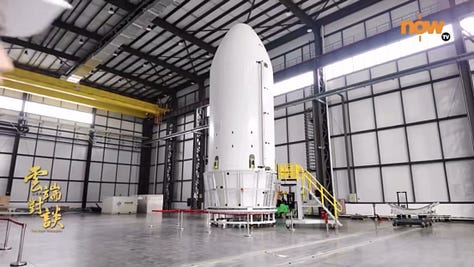
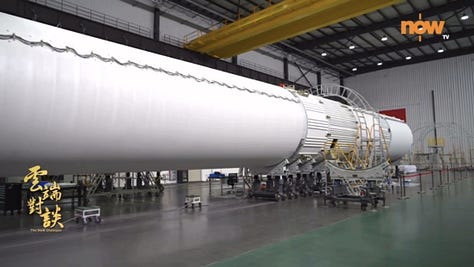
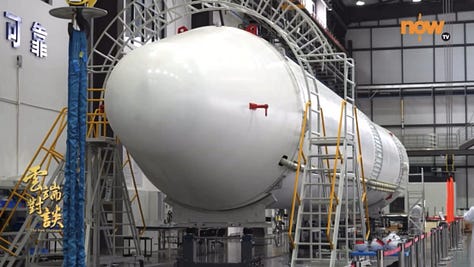
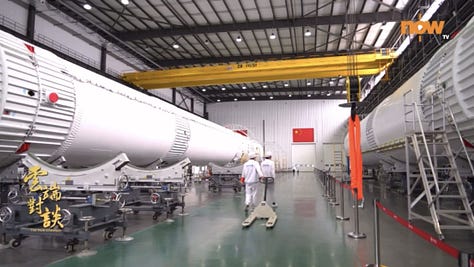
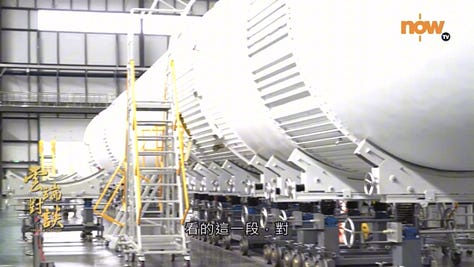
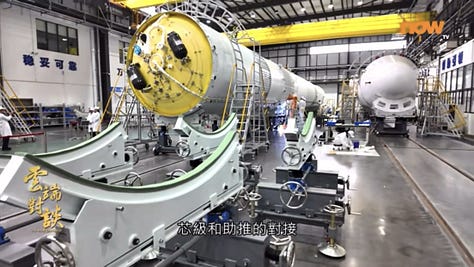
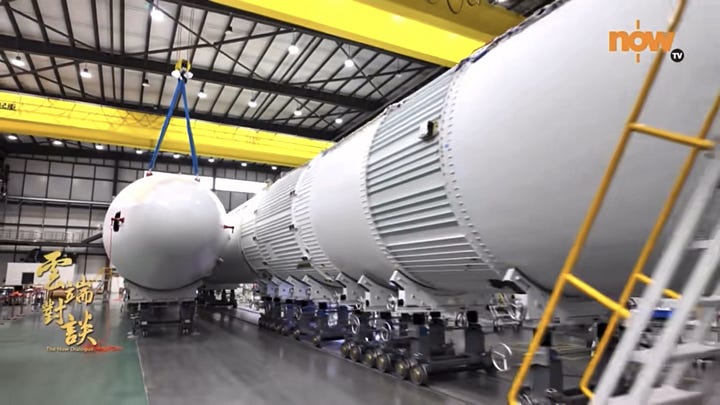
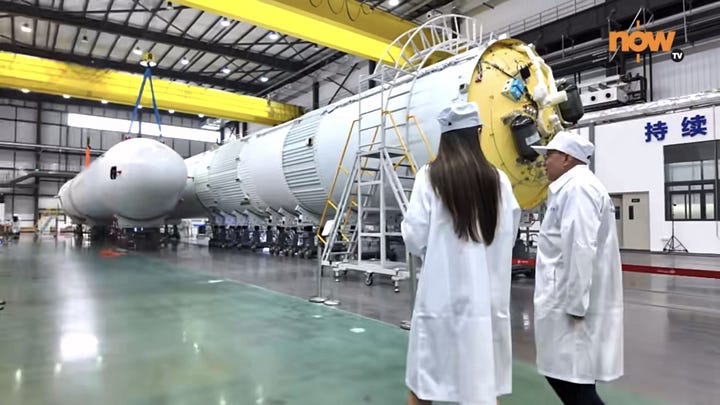
Zhuque-3 fully stacked for debut launch
Having recently completed pre-flight testing, LandSpace has topped off its Zhuque-3 launch vehicle on October 22nd with the rocket’s fairing being placed atop of it. With the fairing, the launch vehicle stands at 66 meters tall.
Due to Shenzhou mission scheduling, LandSpace will be looking to fly from Launch Area 96B after November 9th.
YF-75D upgraded for Long March 8A, Long March 10
The China Academy of Launch Vehicle Technology shared on October 18th that it has completed a set of upgrades for the liquid hydrogen and liquid oxygen burning YF-75D series engine, improving it from the DA variant to the new DB. That variant will power future flights of the Long March 8A in 2026 and possibly the Long March 10 Moon rocket. The academy’s blog post on the improvements is quite informative, so below is a translation of it:
On October 18, the YF-75DB hydrogen-oxygen engine of the Long March 8A launch vehicle successfully completed its qualification test firing. This test was strictly conducted according to a four-cycle work process. Starting from September 22, it underwent four test firings with a total of nine ignitions, covering different operating conditions and comprehensively verifying the engine’s working performance under complex conditions, structural reliability, and the operational adaptability of various components. The successful completion of this test marks the formal entry of this engine model into the engineering application phase.
Song Zhengyu (宋征宇), chief designer of the Long March 8 series rockets, explained: “To further meet customer demands, we have made improvements to the Long March 8A rocket, including upgrades to the engine. Traditional engines rely on pyrotechnic devices and can generally only ignite twice, whereas the YF-75DB hydrogen-oxygen engine uses an advanced torch ignition method. This not only eliminates the pyrotechnic device testing and installation process, significantly improving testing and launch efficiency and shortening the testing and launch cycle, but also provides multiple ignition capability. After the main mission is completed, it can achieve active rapid deorbiting of the upper stage, effectively reducing space debris. This engine model will be equipped on the Long March 8A rocket next year, further enhancing the rocket’s market competitiveness.”
“To enhance the carrying capacity of the Long March 8A rocket, the project team has carried out a series of technical upgrades and optimizations, while further improving the rocket’s launch delay capability,” introduced Cui Lei (崔垒), a member of the project team.
System simplification is another major highlight of this engine model. For example, optimization of the pneumatic system has significantly simplified the testing and launch operation process, effectively improving testing and launch efficiency.
Additionally, this engine model has undergone multiple weight reduction designs, effectively reducing the engine’s overall weight and further enhancing the rocket’s carrying capacity.
During the development and test firing of this engine model, the project team actively deepened communication with brother unit teams, achieved precise coordination, and efficient collaboration, laying a solid foundation for the successful completion of the test firing. Moving forward, the project team will continue to work with full vigor, exploring innovation with the courage to be pioneers, and pooling team wisdom with the tenacity of working together through difficulties, to contribute greater strength to advancing China’s commercial aerospace development.
If there are any problems with this translation please reach out and correct me.
Astronstone prepares for second-stage static fire
On October 17th, Astronstone revealed that its teams have completed a second-stage static fire test article (although calling it flight hardware) and packaged it for transportation to a test site. The 4.2-meter diameter stage already has an engine installed too, possibly being Jiuzhou Yunjian’s (九州云箭) liquid methane and liquid oxygen burning Longyun (龙云) engine, capable of producing 70 to 80 tons of thrust.
A date for the static fire was not shared, but the company is already looking towards preparing a first-stage for a similar test, along with prototyping its tower catch recovery hardware.
Astronstone has been making rapid progress on its two-stage partially reusable rocket, planned to deliver 15,700 kilograms into orbit, with static fire plans announced in July and hardware already being produced in March. The company was founded in mid-2024 too.
Steel Tianlong-3 test tank produced
Lightyear Exploration (光年探索), a commercial launch vehicle propellant tank manufacturer, shared on October 21st that its teams have successfully manufactured a 3.8-meter-diameter stainless steel propellant tank at the request of Space Pioneer. The company says that the tank will be tested in the near future to assess its feasibility to be used on Tianlong-3’s first-stage as part of future cost-saving upgrades to the launch vehicle.
Deep Blue Aerospace fires up Thunder-RS
Deep Blue Aerospace fired up its Thunder-RS engine in October, with the company sharing footage of the firing on October 15th. The 130-ton-thrust rocket-grade kerosene and liquid oxygen burning engine performed a twenty-second-long test to verify its startup, shutdown, and short continued operation.
Deep Blue says that the test was a success, confirming the fuel mixture ratio, but in the footage shared the outside of the engine became covered in soot, with dirt appearing to be thrown around the flame trench beneath the test stand.
Geespace signs into Central Asia
Geespace and Kazakh firm SATLAS signed a Memorandum of Understanding on October 13th to collaborate on policy access, technical cooperation, and market expansion for the Geely Future Mobility Constellation in Kazakhstan and Central Asia. After the signing, Geespace wrote:
“According to the agreement, SATLAS will become a key strategic partner for Geespace in Kazakhstan, providing policy and technical support for the commercial rollout of the [Geely Future Mobility Constellation] in the country. The two parties will work together to promote regulatory approvals, frequency coordination, and licensing, explore the feasibility of building a satellite ground gateway in Kazakhstan, and jointly develop a commercialization roadmap and market strategy for [Geespace]’s IoT services in Kazakhstan and Central Asia. This collaboration will provide robust space-based communication infrastructure to support the region’s digital transformation and smart development.”
“This signing marks the official launch of [Geespace]’s cooperation in Central Asia and injects new momentum into space communication collaboration along the Belt and Road. As the two sides deepen their coordination in technology, policy, and market development, [Geespace] will deliver affordable and reliable satellite IoT communication services to the region, fostering a new pattern of regional connectivity.”
Space Pioneer eyes IPO
Filings from Space Pioneer, who are currently working on the partially reusable Tianlong-3, were found on October 18th, revealing that the company is looking toward an initial public offering on one of China’s stock exchanges.
A week before that, the company raised about 2.5 billion Yuan (approximately 351.1 million United States Dollars, on October 20th) from Central, provincial, and municipal government-backed investors to expand its launch vehicle production ahead of a debut launch.
Nayuta Space begins launch vehicle production
Nayuta Space shared on October 15th that, after extensive design reviews, its Black Bird-R launch vehicle is beginning production efforts, with a test stage aiming to be completed in November. After it is manufactured, the stage will be tested in 2026 on the same platform Tianlong-3 was fired up on.
Back in August, Nayuta Space pivoted its first-stage booster recovery plans from tower catches to what they call Aerodynamic Deceleration, Horizontal Landing. Once developed, Black Bird-R is planned to be 70 meters tall, 3.8 meters in diameter, utilizing a 5.2-meter diameter fairing, massing 480,000 kilograms fully fuelled, and burning liquid methane and liquid oxygen in two stages.



